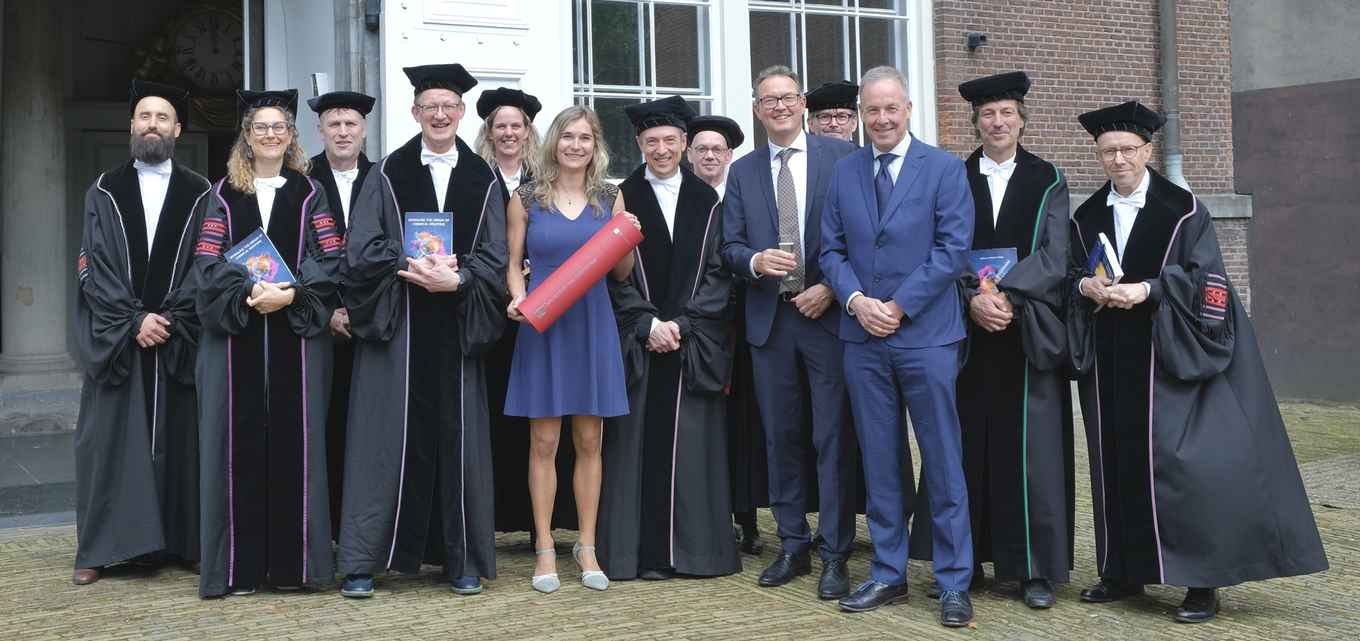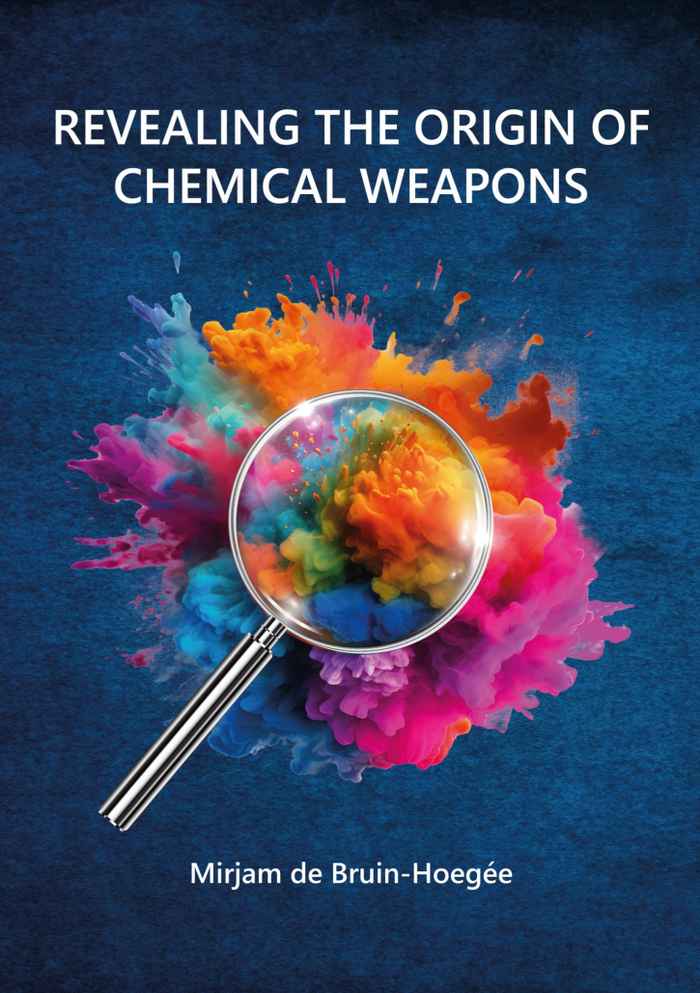Cum Laude doctorate for Mirjam de Bruin – Hoegée
For developing analytical methods that reveal the use of chemical weapons
17 June 2024

During her PhD, De Bruin - Hoegée worked on analytical methods supporting forensic intelligence in a broad range of fields. Her thesis contains real scientific breakthroughs in forensic science and the chemical analysis of Chemical Warfare Agents. She has developed a novel approach for analyzing protein adducts in vegetation as evidence of the release of chemical warfare agents. For this, she identified specific biomarkers that reveal the use of sarin, sulphur mustard, a Novichok nerve agent, and chlorine gas, even months after exposure. She also developed a successful approach for elemental profiling of polymer evidence that can aid in tracking down perpetrators, for instance through identification of specific purchased items. Another chapter of her thesis is dedicated to the chemical attribution of fentanyl and several analogues in biomedical samples. It is the first demonstration of the chemical attribution of drugs at trace levels after metabolism in the human body.
The research of De Bruin - Hoegée combines scientific rigor with an innovative nature, great diversity, and broad applicability. Her work, carried out in close cooperation with TNO Defence, Safety & Security and with funding from the Dutch Ministry of Defence, is inspired by actual needs of experts that conduct investigations at incident scenes under very difficult circumstances. With her thesis, she provides the latest scientific insights and analytical laboratory techniques that aid in convincingly answering questions of direct practical relevance. Her output is remarkable: she has already (co-)authored fifteen scientific publications in leading analytical chemistry, toxicology, and forensic science journals. Adding to this, De Bruin - Hoegée is an active science communicator, presenting and explaining her research to a broad audience.
Abstract of the thesis

Toxic chemicals have been used as a weapon since ancient times. In case of an alleged use of chemical weapons, forensic investigations are conducted to investigate whether a chemical attack has happened and if so, to establish the nature of the utilized agent. In addition to chemical identification, it is important to determine the origin of chemical threat agents, to accurately reconstruct events and identify the perpetrators or exonerate innocent suspects. Forensic intelligence is of key importance to obtain crucial information to accelerate solving a crime, with the ultimate goal to prevent criminal acts before they are executed. This thesis contributes to that goal by presenting multi-analytical profiling strategies for chemical weapons to support forensic intelligence purposes. The potential of chemical attribution of fentanyl and several analogues in biomedical samples was demonstrated. In addition, site-specific chlorinated protein adducts were identified by high-resolution mass spectrometry as a more selective indicator of chlorine gas exposure. Even three months after exposure, nerve agent biomarkers were detected in dried blood spots with a portable detector and laboratory analysis. Subsequently, a novel approach was introduced for analyzing protein adducts in vegetation as evidence of the release of chemical warfare agents. Specific biomarkers for sarin, sulfur mustard, a Novichok nerve agent, and chlorine gas, were detected months after exposure. Lastly, the development of novel matrix-matched standards and statistical methods facilitated elemental profiling of polymer evidence. Overall, this thesis provides chemical profiling strategies for multiple chemical warfare agents and various pieces of evidence to support forensic investigations.
J.M. de Bruin-Hoegée: Revealing the origin of chemical weapons.
Download the PDF from the UvA repository
See also
- Plant biomarkers help determine exposure to chlorine gas used as a chemical weapon
- Finding evidence in plants for the use of chemical weapons
- Detecting nerve agent biomarkers in dried blood spots
- Chemical attribution of fentanyl: The effect of human metabolism
- Blood of drug users can reveal origin of drug
- Website Mirjam de Bruin - Hoegée: forensicscientist.nl